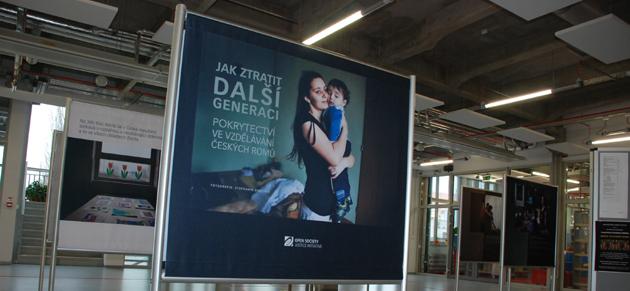Commentary: Czech segregation failing another generation of Roma

Rather a lot has been written about segregation in the Czech schools and about the Romani children who have been (and what is worse, still are) unjustifiably enrolled into the "practical primary schools" (formerly the "special schools"), which are designed to serve children with light mental disability – but apparently not enough has been done about it. At least, not enough to keep many non-Romani parents of first-graders from being horrified by the idea that their child might sit next to a Romani pupil in school.
An exhibition exhibition by American photographer Stephanie Sinclair is now on tour in the Czech Republic entitled "Failing another generation", and it is designed to speak to such parents. This year marks 15 years since this well-established discriminatory system was first taken to the European Court of Human Rights by 18 children from Ostrava.
The judgment that followed in that case irritates many people to this day. In 2007, the court actually confirmed in "D.H. and Others versus Czech Republic" that Romani children were being discriminated against in the Czech Republic and being denied a fundamental right, the right to education.
Ever since then, various action plans and strategies against discrimination have been adopted, a lot of paper has been printed, and a lot of words have been spoken. In the meantime, the children who were at the center of this case have grown up, and many have their own children today.
Their faces and their current lives have been captured by the sensitive lens of photographer Stephanie Sinclair. What future awaits the next generation of the children from the D.H. case?
Will the next generation have to grapple with the same thing their parents fought against? Every year that the Czech state ignores segregation in the education system means yet another battle for Romani first-graders to get to the same starting line.
There are two sides to every coin, and if the Czech public wants everyone to be judged by the same rules, it must also call for an equal, non-discriminatory start for all. This is not just about some utopian dream – it is about practical interests that should concern us all.
The disproportionate, unjustified enrollment of Romani children into the "practical primary schools" has just one clear effect. It expands the ranks of those who have difficulty asserting themselves on the labor market or who are never employed.
This is why I would definitely recommend this series of photographs, which follows the stories of these 18 brave people. I would recommend it not just to those whose heads are full of questions about the context of widespread social problems, and not just to the terrified non-Romani parents of first-graders, but primarily to those whose minds are full of the slogan "Gypsies get to work".
The limited education received by children in the "practical primary schools" predetermines their fates. It is a fate which, as Julius Mika says, one would not wish on one’s worst enemy.
Mr Mika knows what he is talking about. He is one of the 18 children who fought back against that fate.
On the basis of the data produced by research conducted by the Czech Public Defender of Rights on the question of the ethnic composition of the pupils in the former "special schools" during 2011 and 2012, we now have some clear, still-disturbing numbers. About one-third of all the pupils enrolled in today’s "practical primary schools" are Romani children.
In any population, roughly only about 3 % of the children are likely to have light mental disability. Some Romani children may have different educational needs, but these have become a reason to deny them their right to a quality education, which subsequently keeps them apart from that layer of the population that can effectively intervene in social affairs.
The images of those involved in the D.H. case, accompanied by their testimonies, is touring libraries and public spaces in the Czech Republic under the auspices of Open Society Fund Prague. The photographs have been seen, for example, at the Council of Europe in Strasbourg, at the Municipal Library in Jihlava, the Vítkovická Library in Ostrava, and most recently at the Lifelong Learning Center in Hradec Králové.
The exhibition is not just being passively consumed; it is galling to – and sparking a boisterous reaction from – those who represent special needs education in this country. Pavel Svoboda, director of special needs schools in Hradec Králové, even told news server hradecky.denik.cz that the exhibition is a "freak show".
This is not surprising. It hurts to look in the mirror.
You, too, can have a look soon. Open Society Fund Prague is negotiating other exhibition spaces around the country for these photographs.